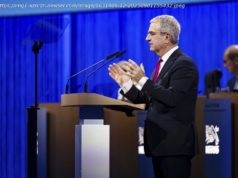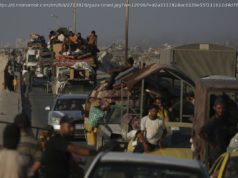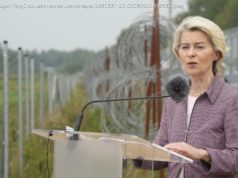The Kremlin began plotting its complex campaign to interfere in the U. S. 2016 presidential election in 2014.
The Russian government plotted its complex campaign to interfere in the U. S. 2016 presidential election for years, according to special counsel Robert Mueller.
The Kremlin, operating through its so-called Internet Research Agency, began monitoring American social media accounts and other sources of information pertinent to the 2016 election in May 2014, Mueller stated in an indictment revealed Friday that brings charges against 13 Russian nationals.
The IRA was in turn overseen by a company called Concord Management and Consulting, which is owned and controlled by oligarch Yevgeniy Prigozhin, who has been dubbed “Putin’s chef” because of his close ties to the Russian president.
Using the codename “Project Lakhta” — which roughly translates to “bay” or “inlet” — the IRA sought to influence elections around the globe, with its preeminent focus being the 2016 election in the United States.
Mueller charges 13 Russians with interfering in 2016 election
The IRA’s efforts were centered on spreading divisive messages via Twitter, Facebook and other social media sites in a deliberate attempt to boost Donald Trump and sabotage Hillary Clinton. Those efforts ramped up significantly between April and November 2016, peaking a few weeks before the election. Trump, who continues to blast the Russia investigation as a “hoax,” has yet to acknowledge that Russians backed him and undermined Clinton.
While the IRA mostly focused on cyber campaigns, it also sent Russian nationals to the U. S. to gather intelligence. Two IRA officials, Aleksandra Krylova and Anna Bogacheva, traveled through the country between June 4,2014 and June 26,2016 for the sole purpose of collecting intel ahead of the election, with stops in Nevada, California, New Mexico, Colorado, Illinois, Michigan, Louisiana and New York. Mueller did not specify what type of intel Krylova and Bogacheva obtained during their trip.
The IRA’s meddling campaign became so extensive that by September 2016, its monthly budget for Project Lakhta exceeded $1,250,000.
The stealthy cyber organization avidly engaged in spamming out election-related hashtags through bots, including “#Trump2016,” “#TrumpTrain,” “#MAGA,” “#IWontProtectHillary” and “#Hillary4Prison,” Mueller said.
Trump claims Mueller’s indictment proves ‘no collusion!’
It also created scores of fake accounts masquerading as official Republican entities, including @TEN_GOP, which attracted more than 130,000 followers. To spread further discord, the IRA created accounts that aimed to inflame already divisive issues, such as Black Lives Matter, Muslims in the U. S. and gun control. Magnifying divisive issues is a strategy commonly adapted by Russian operatives to spread distrust in Democratic institutions.
Nearly 700,000 Americans retweeted, liked or followed accounts operated by the IRA during the campaign, according to Twitter statistics.
Along with its social media campaigns, the IRA was in direct contact with “unwitting” members, volunteers and supporters of the Trump campaign, according to Mueller’s indictment. The indictment does not reveal which members of the campaign were in contact with the Russians, but notes that at least three “campaign officials” had communicated with them. While the indictment stresses that it does not prove that Trump officials colluded with the Kremlin, it does note that there’s no evidence denying it either.
Beyond social media and outreach efforts, the IRA actually took its campaign to American streets.
Ex-Trump campaign aide Rick Gates to cop plea deal with Mueller
The group organized a string of pro-Trump rallies in Florida on Aug. 20,2016, using fake accounts such as the Facebook group “Being Patriotic” and the Twitter account @March_for_Trump to coordinate its efforts. The rallies were collectively referred to as “Florida Goes Trump.”
The grassroots organizing efforts came to a head after Trump’s election, when the IRA — still intent on sowing discord — used fake accounts to plan rivaling rallies in New York City. One event, planned for Nov. 12, urged Americans to come out for a rally in Manhattan to “show your support for President-Elect Donald Trump.” Another event, also planned for Nov. 12, was dubbed “Trump is NOT my President” and urged Americans to take to the streets of Manhattan to show their displeasure with the new administration.






